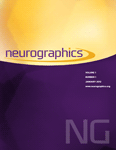
Beyond the Molar Tooth: A Review of Imaging Findings in Joubert Syndrome and Related Disorders
Joubert syndrome and related disorders encompass a group of ciliopathies that present with variable neurologic and systemic phenotypes. The diagnosis of Joubert syndrome and related disorders is based on a combination of clinical features and imaging findings, the classic being the
“molar tooth sign” that arises from cerebellar hypoplasia. However, multiple additional imaging findings have been reported in the case literature. In this article, we present an overview of the imaging techniques and a review of the imaging findings that the neuroradiologist should
be aware of when evaluating a study for a patient with Joubert syndrome and related disorders.
Learning Objective: To discuss the genetics and clinical phenotypes of Joubert syndrome and related disorders and describe the varied neuroimaging findings that can be seen in these patients.
Learning Objective: To discuss the genetics and clinical phenotypes of Joubert syndrome and related disorders and describe the varied neuroimaging findings that can be seen in these patients.
Keywords: JSRD = Joubert syndrome and related disorders; JS = Joubert syndrome; MTS = molar tooth sign; Shh = sonic hedgehog; T1w = T1-weighted; T2w = T2-weighted
Document Type: Research Article
Publication date: 01 April 2025
- Access Key
- Free content
- Partial Free content
- New content
- Open access content
- Partial Open access content
- Subscribed content
- Partial Subscribed content
- Free trial content